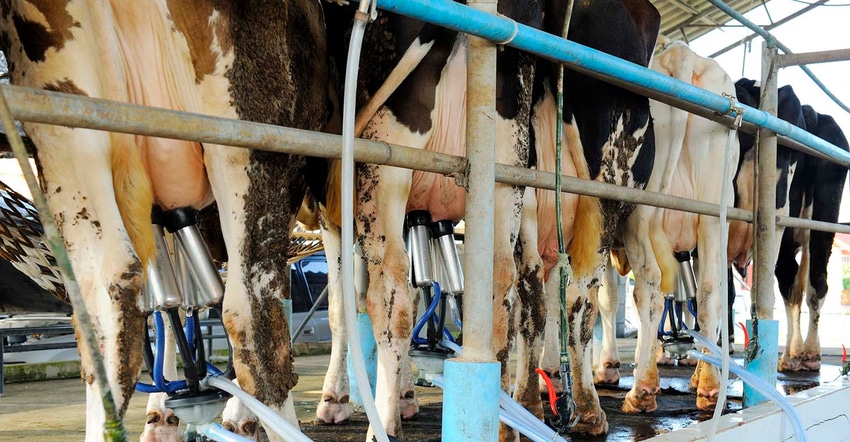
After spending five months trading in a down trend, losing nearly $2.75 since the May price high, November 2021 Class III milk futures found a price low in late September near the $17 price area. After floundering near this level for nearly two weeks, prices found both technical and fundamental support.
Starting in late September, in nineteen quick trading sessions, prices rallied higher gaining $3.00 to reach a price high of $19.99. Why the recent rally?
Strong demand
Fundamentally, the dairy complex has had strong demand for products in recent weeks, a main supportive factor for the recent rally. With the holiday season right around the corner, demand for cheese and butter remains strong domestically. Also strong are U.S. dairy exports.
United States Dairy Exports in August totaled 232,150 metric tons. This was up 26,677 metric tons (13%) from August of 2020 and up 3,405 metric tons (1.5%) from the previous month.
Then on the most recent Global Dairy Trade Auction, the index jumped 2.2% to its highest level in seven auctions. Cheddar was up 2.9% while butter jumped 4.7%, keeping GDT prices at a significant premium to US spot prices. This continues to give credibility to the argument U.S. dairy product export demand should remain strong in the weeks ahead.
Production trends lower
In addition to strong dairy product demand, actual milk production levels in the United States have been trending lower. The USDA said that milk production in the month of September totaled 18,075,000,000 pounds, which was up just 0.20% from the same month last year. This slight growth rate can be viewed as supportive for prices, considering May growth year-over-year was 4.70% and June growth was up at 2.90%. Production is trending lower.
Several individual states saw production decline on a year-over-year basis as well. Florida production fell 6.80%, Kansas production fell 0.30%, New Mexico production fell 12.50%, Pennsylvania production fell 2.10%. There were some states however, that showed year over year growth. Wisconsin production in September added 3.30% from a year ago while California was up just 0.20% Michigan production added 1.80%, Minnesota added 2.40%, New York added 1.80%, Iowa added 2.50%
The reason for overall national lower production levels stem from the fact that U.S. milk cows on farms fell 25,000 head from August, totaling 9,422,000 million head in September. Cow numbers have been on a steady decline, having fallen 85,000 head from the May peak. Some feel higher priced feeds may also be affecting dairy farms, enticing some producers to mix up feed rations to reduce costs. Cows not eating the best in nutrition can lower overall milk production.
$20.00 Class III milk futures price is going to be a difficult price value to trade above. In fact, prices have already set back $1.00 in the past few trading sessions. While there are reasons to be optimistic for firm price direction for the dairy complex, additional friendly news is needed to justify any reason for milk futures to climb above the illustrious $20.00 price mark. It would take a combination of continued demand and additional production cuts to make that feat into a reality.
Reach Naomi Blohm at 800-334-9779, on Twitter @naomiblohm and [email protected].
Disclaimer: The data contained herein is believed to be drawn from reliable sources but cannot be guaranteed. Individuals acting on this information are responsible for their own actions. Commodity trading may not be suitable for all recipients of this report. Futures and options trading involve significant risk of loss and may not be suitable for everyone. Therefore, carefully consider whether such trading is suitable for you in light of your financial condition. No representation is being made that scenario planning, strategy or discipline will guarantee success or profits. Any decisions you may make to buy, sell or hold a futures or options position on such research are entirely your own and not in any way deemed to be endorsed by or attributed to Total Farm Marketing. Total Farm Marketing and TFM refer to Stewart-Peterson Group Inc., Stewart-Peterson Inc., and SP Risk Services LLC. Stewart-Peterson Group Inc. is registered with the Commodity Futures Trading Commission (CFTC) as an introducing broker and is a member of National Futures Association. SP Risk Services, LLC is an insurance agency and an equal opportunity provider. Stewart-Peterson Inc. is a publishing company. A customer may have relationships with all three companies. SP Risk Services LLC and Stewart-Peterson Inc. are wholly owned by Stewart-Peterson Group Inc. unless otherwise noted, services referenced are services of Stewart-Peterson Group Inc. Presented for solicitation.
The opinions of the author are not necessarily those of Farm Futures or Farm Progress.
About the Author(s)
You May Also Like






